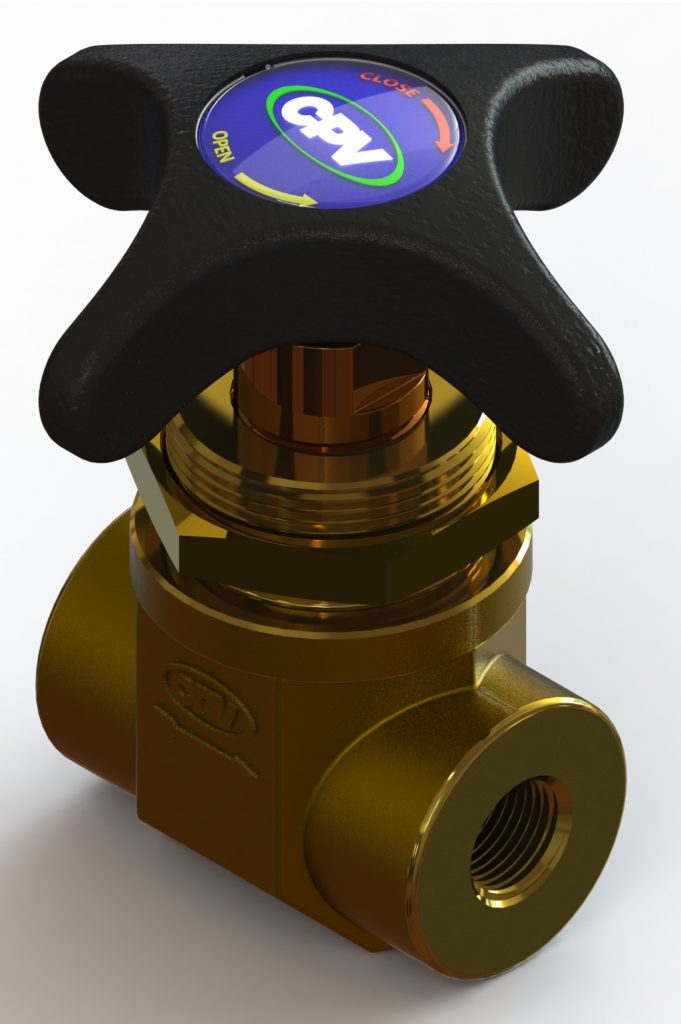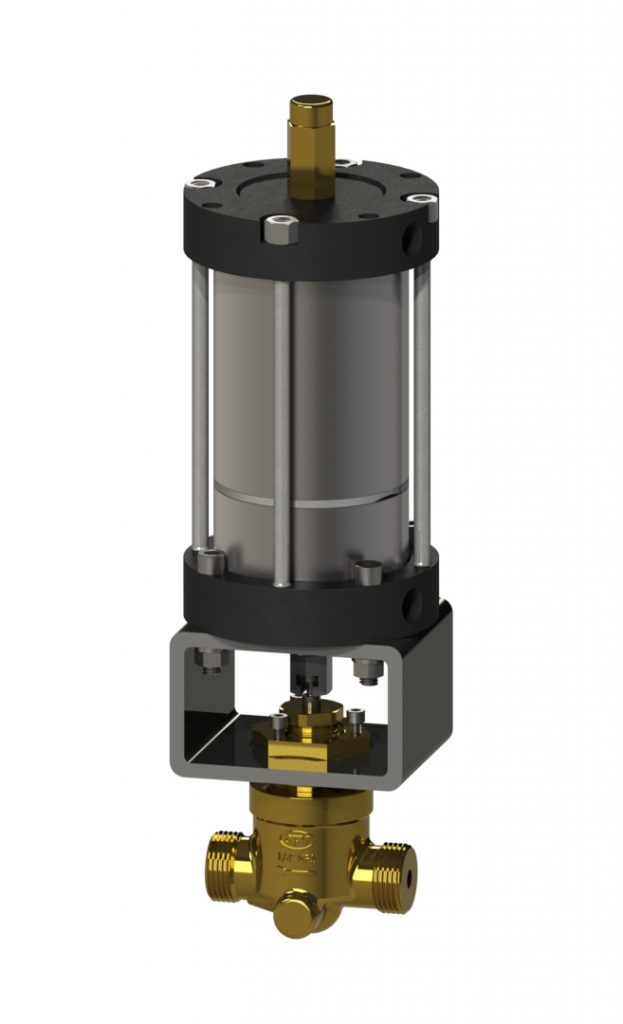Control Valves
 Control valves are an essential part of any fluid handling system, and are used to control the flow of fluids by varying the size of the flow passage. This allows for direct control of the flow rate and the consequent control of process quantities such as pressure, temperature, and liquid level. Control valves are available in a variety of sizes and configurations to suit any application, and their precise operation is crucial to maintaining optimal system performance.
Control valves are an essential part of any fluid handling system, and are used to control the flow of fluids by varying the size of the flow passage. This allows for direct control of the flow rate and the consequent control of process quantities such as pressure, temperature, and liquid level. Control valves are available in a variety of sizes and configurations to suit any application, and their precise operation is crucial to maintaining optimal system performance.
For maximum safety and protection, choose a control valve from a leading manufacturer like CPV Manufacturing. If you have questions or comments, please contact us and we will be happy to help.
Types of Control Valves
1. What is a needle valve?
Needle valves are used to regulate high-pressure fluids and gasses within a pipeline. Hydraulic needle valves can be used to control water flow in both directions and they are similar to shut-off valves. However, the main difference between these two types of valves is how they’re designed.
The needle valve has a plunger design that closely resembles a sewing needle. This plunger control the flow of fluids or gasses with extreme precision. It also protects delicate gauges from sudden and extreme changes in pressure.
CPV Manufacturing makes needle valves in a variety of different materials. Stainless steel needle valves are popular because they are extremely durable, can withstand extreme temperatures, and require very little maintenance.
Beyond choosing the right material, CPV Manufacturing can also set up your valves to operate manually or automatically.
For more information on pneumatically operated needle valves, please view our Actuated Needle Valves page.
2. What is a shutoff valve?
Shutoff valves are designed to control the flow of fluids or gasses within a pipeline. These valves are popular among engineers because they are durable, easy to service, and safe to use.
Shutoff valves are used to block compressed air or fluids in an industrial automation process and they have many benefits. Industrial pipelines that use shutoff valves are easier to service and safer in the event of a safety risk or equipment failure. This is because they allow individuals to block air or gas flow in a certain section of the pipeline, without turning off the whole system.
These valves come in a variety of different sizes and materials, and can be used in many different industries. Because they are so common, it’s important to get the one that’s right for your business. Contact CPV Manufacturing today and we can help you find the right one for your needs.
For more information on pneumatically operated shutoff valves, please view our Actuated Shutoff Valves page.

Frequently Asked Questions
Why use a control valve instead of an on-off valve?
Control valves enable precise process modulation rather than simple stop-or-go operation. This precise modulation is essential for maintaining stable process conditions and product quality. On-off valves create abrupt flow changes that can cause system instability, pressure surges, and process upsets. Control valves provide smooth, graduated flow adjustment that prevents these issues. This precise control capability reduces energy consumption, minimizes wear on system components and helps supply consistent product quality in manufacturing processes.
CPV Manufacturing’s robust valve designs provide the durability and performance needed to maintain consistent process conditions over thousands of operating cycles for applications requiring reliable, precise flow control.
What features should be considered when selecting a control valve?
Criteria include valve type; hand-operated or actuated (linear vs. rotary), flow characteristic (linear, equal-percentage, quick-open), actuator compatibility, pressure/temperature rating, and media compatibility
Critical selection criteria include valve body type (linear or rotary), flow characteristics (linear, equal-percentage, or quick-open), actuator compatibility, pressure and temperature ratings and media compatibility with process fluids. Additional considerations encompass rangeability requirements, leakage class specifications, maintenance accessibility and compliance with industry standards such as ANSI, API, or IEC. The valve’s control characteristics must match the process requirements to ensure stable control performance throughout the operating range.
Environmental factors like temperature extremes, corrosive media and installation space constraints also influence selection decisions. CPV Manufacturing’s comprehensive product line includes high-pressure valves rated up to 6000 PSI and beyond, with temperature capabilities from -70°F to 400°F, supplying reliable performance in the most demanding control applications. Learn more about our product line and specifications: https://www.cpvmfg.com/valves/
What is an actuated control valve and how does it operate within a control loop?
A control valve functions as the critical “final control element” in automated process systems, precisely regulating flow, pressure, temperature or level in response to control signals from sensors and controllers. These sophisticated devices receive input signals from process controllers and automatically adjust their openings to maintain desired process conditions.
Unlike simple on-off valves, control valves provide continuous modulation, enabling precise process variable control essential for maintaining product quality, safety and operational efficiency. CPV Manufacturing’s extensive experience in high-pressure valve technology makes them an ideal partner for engineered control valve solutions that meet the demanding requirements of critical industrial processes.
What types of actuators are used for actuated control valves?
Control valve actuators come in three primary types: pneumatic, electric and hydraulic. Each control valve actuator is selected based on specific application requirements such as response time, power availability and environmental conditions.
Pneumatic actuators use compressed air and offer fast response times, making them popular for process control applications, while electric actuators provide precise positioning and are ideal for remote locations without compressed air systems. Hydraulic actuators deliver exceptional force for large valves or high-pressure applications but require hydraulic power systems.
CPV Manufacturing has more than a century of experience in valve design and manufacturing, to help us recommend the optimal actuator configuration for your specific control valve application.
How do control valves contribute to efficient water management?
Control valves optimize water system performance by maintaining stable pressure, regulating flow rates, and working in conjunction with protective devices like check valves to prevent damaging pressure surges. These devices automatically respond to changing demand conditions, reducing energy consumption by eliminating the need for constant pump cycling and minimizing water loss through precise pressure regulation. Modern pressure-independent control valves maintain consistent flow regardless of system pressure fluctuations, further improving efficiency and reducing operating costs.
While control valves regulate flow and pressure, CPV Manufacturing’s expertise extends beyond control valves to include their renowned Silent Check Valves, which have been protecting systems since the 1940s and can be found in landmark installations worldwide, including the iconic Seattle Space Needle. This comprehensive valve solution approach ensures complete system protection, combining precise flow control with reliable protection against water hammer and pressure surges that could damage pumps and piping systems.
